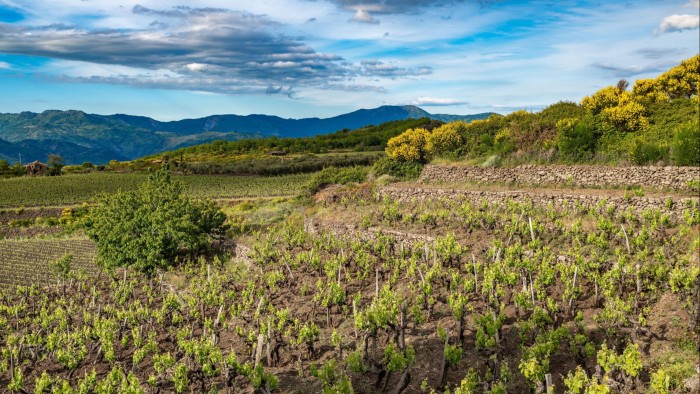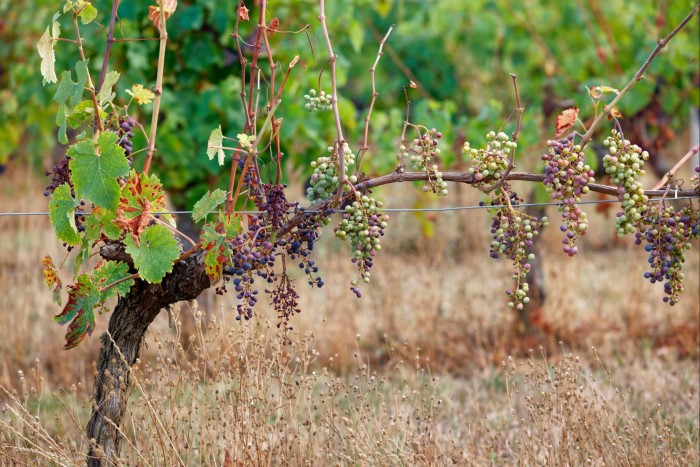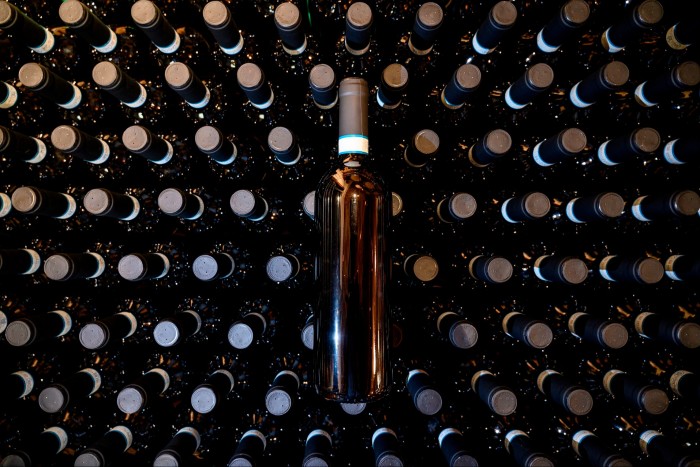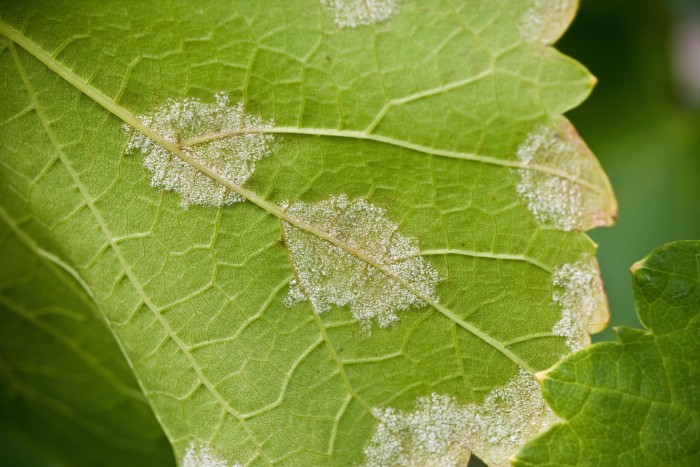Too hot, too dry, too wet: climate change hits Italy’s winemakers hard

Roula Khalaf, Editor of the FT, selects her favourite stories in this weekly newsletter.
Pucci Giuffrida’s Al-Cantàra winery stands on the cool slopes of Sicily’s Mount Etna, where he cultivate grapes on 15 hectares of rich volcanic soil to produce about 100,000 bottles of wine each year.
Mount Etna normally provides an ideal microclimate for viticulture, with lower temperatures and better air circulation than the scorching Sicilian plains below. But, last year, southern Italy was hit by incessant rain in May and June, leading to a proliferation of the fungus Plasmopara viticola, which thrives in warm, humid conditions.
This fungus — first discovered in the US and introduced to Europe with the onset of transatlantic shipping — causes grapevine downy mildew and wreaked havoc in vineyards across southern Italy. Al-Cantàra’s autumn harvest was less than 60 tonnes — about half of the normal yield of 100 to 120 tonnes.
“In these 18 years, I have never seen such a damaged harvest,” says Giuffrida, 72, a retired accountant who started making wine in 2005. “The clusters of grapes were petrified — like small stones. Some of our neighbours did not harvest even a single cluster.”
In southern Italy’s key wine-producing regions, many vineyards lost 80 to 100 per cent of their crop, while the country’s wine production overall dropped by about 15 to 20 per cent.

“Producers do not remember such a strong attack of downy mildew, unseasonable rain and significant humidity — or such a loss of production — in the past 20 years,” says Palma Esposito, senior policy adviser on wine and olive oil for Confagricoltura, Italy’s oldest farming and agribusiness association. “It was really notable.”
Italy’s coveted status as the world’s largest wine producer — held for the past nine years — was lost to France. Experts warn the pathogen’s impact will be felt this year too, highlighting the threats to Italian viticulture from climate change.
Italian grape cultivation once took place amid fairly predictable seasonal patterns. But increasingly erratic weather and the growing frequency of extreme events — such as droughts, excessive off-season precipitation, and hail — are posing new challenges.
Chiara Lungarotti, chief executive of the Umbria-based Lungarotti Estate, says growers need to be more attentive in tending their vines to keep them healthy amid climatic vagaries.
“We have to be extremely elastic in our approach,” she explains. “The weather will change continuously. We won’t have any more of the fixed seasons that we were used to. We will need to understand how to get into the vineyard at the right moment to make a difference.”
Esposito says Italian authorities, grape growers and winemakers are now focused on making vineyards more resilient to secure the future of the sector, which exported €8bn worth of wine in 2022. “It’s a very urgent topic,” she says. “We are discussing it at the national and European level.”

Grapevines are hardy plants, and winemakers have long considered a little water stress as a benefit, creating grapes with a good level of sugar and flavour. However, excessive moisture generates an overabundance of lower-quality grapes. And severe water shortages, amid the extreme heat experienced with global warming, can raise grapes’ sugar levels too much — resulting in stronger wines that are unpopular with consumers.
Many winemakers are worried about this happening in southern Italy, which is already hot and dry. “The market doesn’t want wines that are too alcoholic,” Esposito says.
Many growers are now looking to technology, including soil sensors and overhead drones, to monitor vineyards and determine precisely where interventions are required to help maintain a healthy equilibrium.
“Precision viticulture can really help a lot,” Lungarotti suggests. “The drones can really help in mapping the vineyards in an incredible way. You make this map that gives you all the different colours according to the strength and vigour of the plant . . . We can go and be most focused on certain points of the estate.”
Interventions can include emergency irrigation — once anathema — or the application of kaolin or other clays on grape clusters, which helps deflect the sun and keep the fruit cooler in case of extreme heat.

Digital sensors can also help farmers in the battle against Plasmopara viticola, which can be controlled by timely, targeted application of a copper-based fungicide approved for use in the EU, albeit in limited quantities.
“If the plant is suffering, you may know it much earlier,” says Riccardo Velasco, director of the Research Centre for Viticulture and Oenology at Crea, Italy’s pre-eminent public agricultural research centre. “The sensors tell you which part is healthy and which part is at risk, and you can intervene only in those areas that are suffering.”
New grape varieties may help, too. Velasco, a geneticist, is breeding pathogen-resistant varieties by crossbreeding local grapes with a gene found in wild grapevines in the US, which have a natural resistance to Plasmopara viticola. These new varieties — whose development is being partly funded by Confagricoltura — are now being field tested.
Velasco is using new breeding technologies, as well, to try to develop rootstocks that are more resilient to water stress, with the first field trials of these beginning soon. Meanwhile, other research institutes are using traditional crossbreeding techniques to develop more drought-tolerant rootstocks.
Lungarotti, however, stresses that technology is only part of the solution. Careful attention to the basics of running a vineyard — managing the canopy (the stems and leaves), working the soil and maintaining its biodiversity, and keeping water channels clear to allow run-off after rain — also makes a difference in helping plants to withstand a harsher climate.
“It’s a matter of balance,” she says. “The extremely modern technologies are something you can’t live without today. But, on the other hand, you have to preserve the local environment. An essential part of our job is very attentive maintenance.”
Despite this, rising temperatures are pushing vineyards to ever higher altitudes. On Mount Etna, new vineyards have been established at up to 1,200 metres above sea level — a height previously thought unfavourable for grape growing.
Giuffrida says he is now keeping an eye out for potential higher-altitude properties to rent or buy as he confronts a warming world. “It’s a solution we are evaluating,” he says. “But I’m confident that, with technology, we can maintain the quantity and quality of our production.”
Climate Capital

Where climate change meets business, markets and politics. Explore the FT’s coverage here.
Are you curious about the FT’s environmental sustainability commitments? Find out more about our science-based targets here

Comments